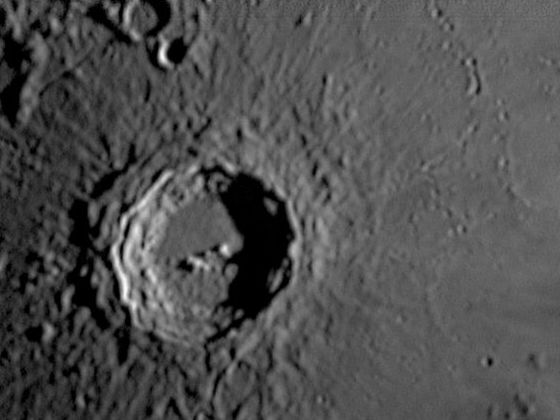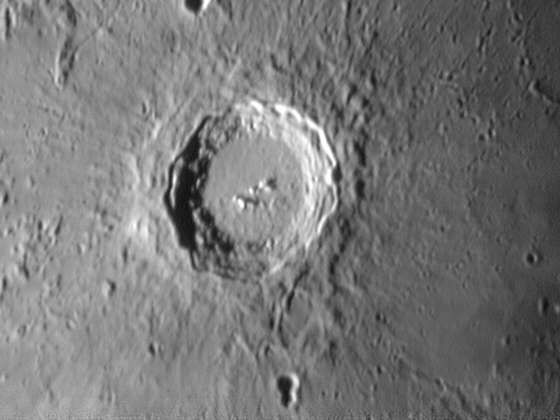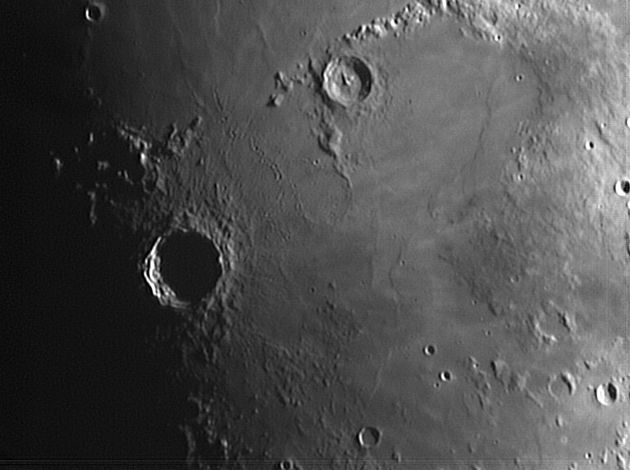Move your mouse over the picture to see the names of the various features.
Copernicus is a very young crater at less than 1,000 million years. It is 95 Km in diameter
and its walls rise to 3,760 metres. It has three central mountains, the highest 1,200 metres
high. The northern part of the floor is significantly smoother than the southern part.
At this scale there are few other formations in the picture. Mare Imbrium is to the north,
Mare Nubium to the south.

|
The picture was taken with a ToUcam attached to my ETX125 with a X2 lens attached on 30th March 2004,
when the Moon was 9.1 days old.
|
| Date and Time |
30th March 2004 20:58 UT |
Camera |
ToUcam 740K |
Telescope |
ETX125 with X2 lens |
Capture |
K3CCDTools. 50% gamma, 1/33", 15% gain, 364 frames |
Processing |
Registax. 214 frames stacked. Wavelet 1,2 = 10, wavelet 3 =5 |
|

|
The picture was taken with a ToUcam attached to my LX200 with a X2 lens attached on 7th October 2004,
when the Moon was 22.8 days old. The Sun was much higher in the sky over Copernicus; it was
early afternoon as can be see by the comparative lack of shadows. The arrows in the bottom
left-hand corner represent approximately 50 Km north and east.
|
| Date and Time |
7th October 2004 03:56 UT |
Camera |
ToUcam 740K |
Telescope |
LX200 with X2 lens |
Capture |
K3CCDTools. High gamma, 1/50", 36% gain, 392 frames |
Processing |
Registax. 254 frames stacked. Wavelet 1-3 = 10 |
Click here to see a
mosaic of this area taken at the same time. |
|

|
This is a wider picture taken with a ToUcam attached to my ETX125 on 15th July 2005,
when the Moon was 8.5 days old. It shows Copernicus in the lower left and
Eratosthenes towards the top and the very
southern end of the Apennine mountains at the very top. The picture was taken 50
minutes before sunset and was made in infra-red light.
The Sun was only just rising over Copernicus whose floor is still in darkness, but
Eratosthenes is almost 9° east of Copernicus, so the Sun was 9° higher in the sky,
and it is somewhat less deep than Copernicus and so its floor is almost fully illuminated.
|
| Date and Time |
15th July 2005 19:26 UT |
Camera |
ToUcam 740K |
Telescope |
ETX125 |
Capture |
K3CCDTools. 0% gamma, 1/25", 23% gain, 398 frames |
Processing |
Registax. 178 frames stacked. Wavelet 1-3 = 10, contrast 240, brightness -50 |


